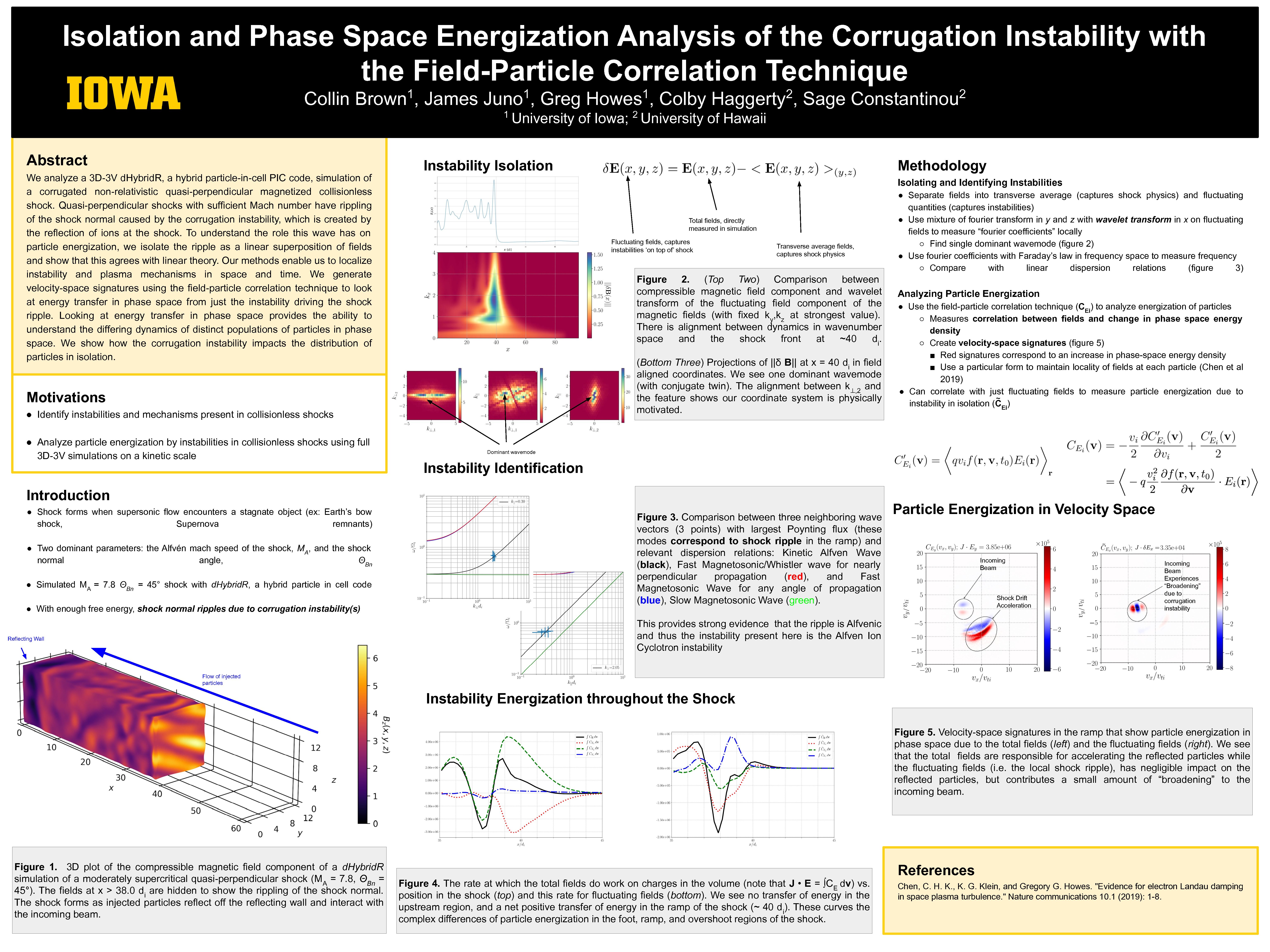Authors: Collin Brown (University of Iowa), James Juno (Princeton Plasma Physics Laboratory), Greg Howes (University of Iowa), Colby Haggerty (University of Hawaii), Sage Constantinou (University of Hawaii)
We analyze a 3D-3V dHybridR, a hybrid particle-in-cell PIC code, simulation of a corrugated non-relativistic quasi-perpendicular magnetized collisionless shock. Quasi-perpendicular shocks with sufficient Mach number have rippling of the shock surface caused by the corrugation instability, which is created by the reflection of ions at the shock. To understand the role this wave has on particle energization, we isolate the ripple as a linear superposition of fields and show that this agrees with linear theory. Our methods enable us to localize instability and plasma mechanisms in space and time. We generate velocity-space signatures using the field-particle correlation technique to look at energy transfer in phase space from just the instability driving the shock ripple. Looking at energy transfer in phase space provides the ability to understand the differing dynamics of distinct populations of particles in phase space. We show how the corrugation instability impacts the distribution of particles in isolation.


